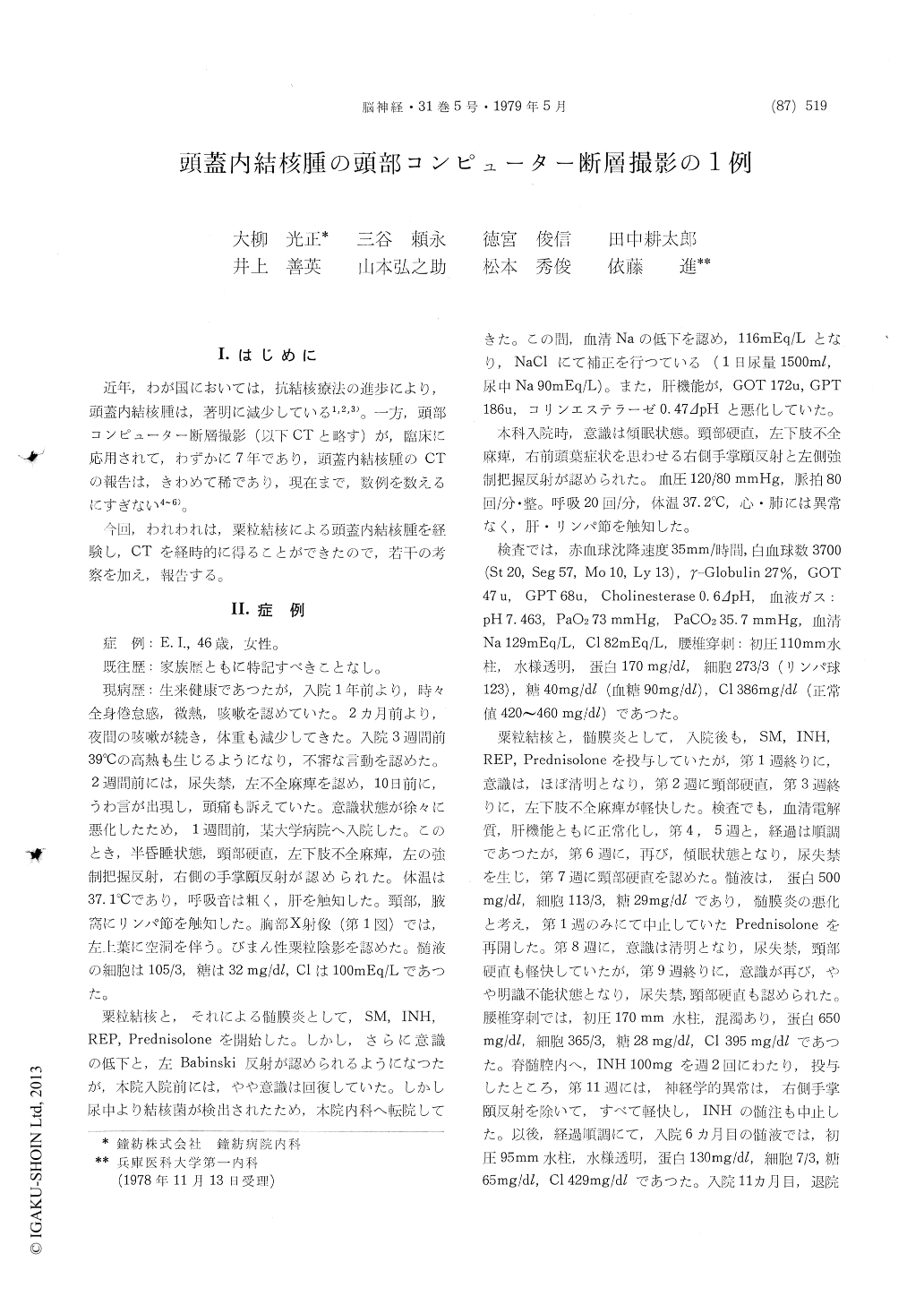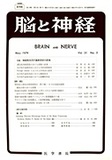Japanese
English
- 有料閲覧
- Abstract 文献概要
- 1ページ目 Look Inside
I.はじめに
近年,わが国においては,抗結核療法の進歩により,頭蓋内結核腫は,著明に減少している1,2,3)。一方,頭部コンピューター断層撮影(以下CTと略す)が,臨床に応用されて,わずかに7年であり,頭蓋内結核腫のCTの報告は,きわめて稀であり,現在まで,数例を数えるにすぎない4〜6)。
今回,われわれは,粟粒結核による頭蓋内結核腫を経験し,CTを経時的に得ることができたので,若干の考察を加え,報告する。
Here in Japan too the number of cases of cranial tuberculoma has markedly decreased with the progress of antituberculous therapy in recent years, and reports on the cases of computed tomography (hereinafter abbreviated to CT) in this disease arescanty.
We encountered cranial tuberculoma complicated with miliary tuberculosis and were able to examine it on CT on a time course basis, results of which are reported here.
A 46-year-old woman was admitted to this hospital with semicoma as chief complaint. One year prior to admission she sometimes noted slight fever and coughs. Two months prior to admission the cough continued at night and the body weight began to decrease.
Three months prior to admission, she had a spell of high fever 39℃, showed marked loss of weight and began to behave strangely. Two weeks earlier there developed mild left partial paralysis and in-continence of urine.
With consciousness lowered, she was admitted. On admission she was in a state of semicoma with neck stiffness, left partial paralysis, positive left Babinski reflex.
The palmomental reflex and forced grasping reflex on the right were also noted. The respiratory rate was 20 per minute.
The respiratory sound was coarse. The liver and superficial lymph node were palpable. Tubercle bacillus was proven in urine. Chest X-ray films revealed miliary densities diffusely and ring-shadows in the left upper lobe. Lumbar puncture showed an increase in cells and protein as well as a decrease in sugar and chlorine. Diagnosed as miliary tuberculosis and meningitis secondary to it, she was treated with INH, REP, Streptomycineand Prednisolone. Symptoms were improved for a time but the state of consciousness and neck stiffness were aggravated again. With INH in-jected into the spinal cavity, symptoms and neuro-logical tests were normalized except right palmo-mental reflex in two weeks, and she was discharged at the 11th month.
The CT scan at the beginning of admission showed a low density area in the right frontal lobe, which showed no change even after enhancement with a contrast medium. This suggested findings due to inflammation with no granuloma formed. Dilation of the ventricle was not observed either.
On CT scan three months later, the low density area observed in the previous CT changed into an area of same density and a low density area around it. An area surrounded by low density was noted as high density after enhancement with a contrast medium. This high density area is considered rich in granulation tissue, while the surrounding low density area is probably due to edema.
On the CT scan 15 months after, the high density area and surrounding low density area in the second CT were apparently diminished and the density also declined slightly, indicating that anti-tuberculous therapy is effective.
The CT scan is considered very useful in de-termining location, size of cranial tuberculoma and its relation with surrounding tissue and in evalu-ating the effectiveness of therapy.

Copyright © 1979, Igaku-Shoin Ltd. All rights reserved.


